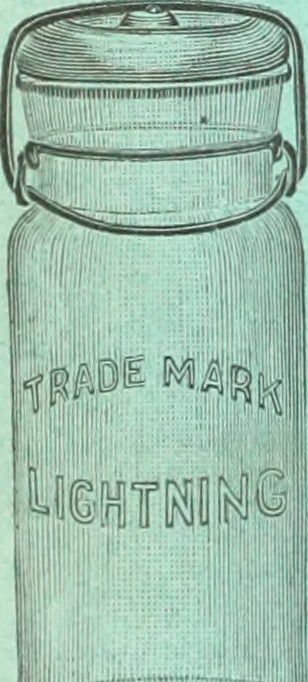Throughout history, certain artifacts have captured the imagination and admiration of people worldwide, not just for their material worth but for their historical significance and cultural impact. From ancient relics to exquisite works of art, these priceless treasures tell the stories of civilizations and highlight human ingenuity and creativity. Displayed in museums across the globe, they provide an invaluable connection to our past, offering insights into the lives, beliefs, and accomplishments of those who came before us. Here are 20 of the priciest and most significant historical artifacts housed in museums today.
Tutankhamun’s Death Mask – Egyptian Museum, Cairo
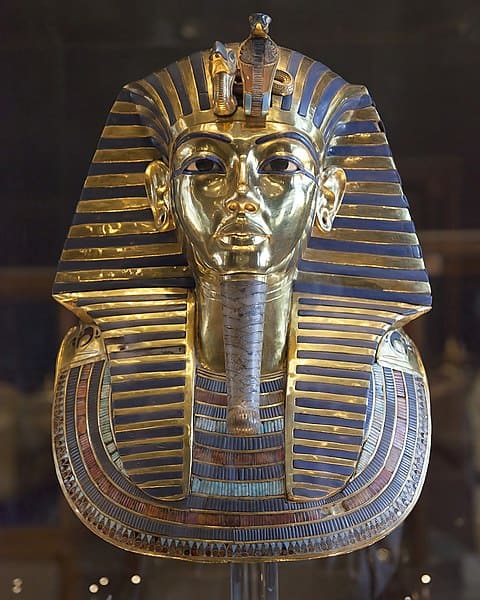
Estimated Value: Priceless (insured for hundreds of millions of dollars). The golden death mask of Tutankhamun is one of the most iconic and valuable artifacts in history. Crafted from 24 pounds of solid gold and inlaid with semi-precious stones, this mask was discovered in 1922 by Howard Carter. It adorned the mummified body of the young pharaoh Tutankhamun and dates back to the 14th century BC. The mask’s craftsmanship and historical significance make it priceless, symbolizing ancient Egyptian artistry and the boy king’s brief yet impactful reign.
The Rosetta Stone – British Museum, London
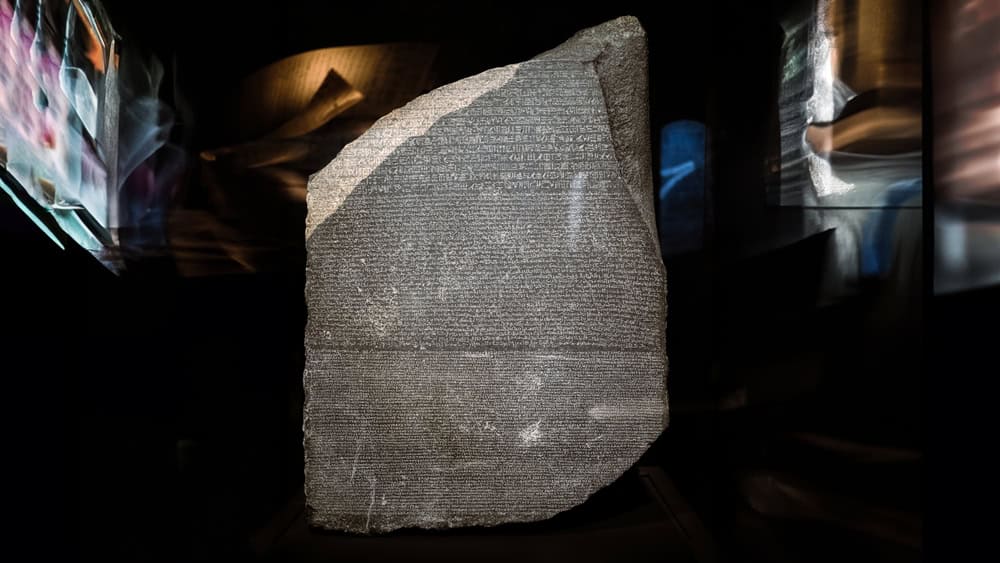
Estimated Value: Priceless (considered invaluable for its historical significance). Unearthed in 1799, the Rosetta Stone is a granodiorite stele inscribed with a decree issued in 196 BC. It features the same text in three scripts: Greek, Demotic, and hieroglyphic, which provided the key to deciphering Egyptian hieroglyphs. This artifact’s immense historical value lies in its role in unlocking the secrets of ancient Egyptian writing and language. The Rosetta Stone remains a cornerstone of Egyptology and an irreplaceable piece of history.
The Crown Jewels – Tower of London, London

Estimated Value: $4 billion (collective value of the entire collection). The British Crown Jewels, housed in the Tower of London, include some of the most exquisite and valuable regalia in the world. Among these is the Imperial State Crown, adorned with 2,868 diamonds, including the famous Cullinan II. These jewels are not only symbols of the British monarchy’s power and history but also represent immense wealth. Their historical and ceremonial significance, combined with their extraordinary materials, make them priceless.
The Hope Diamond – Smithsonian Institution, Washington D.C.
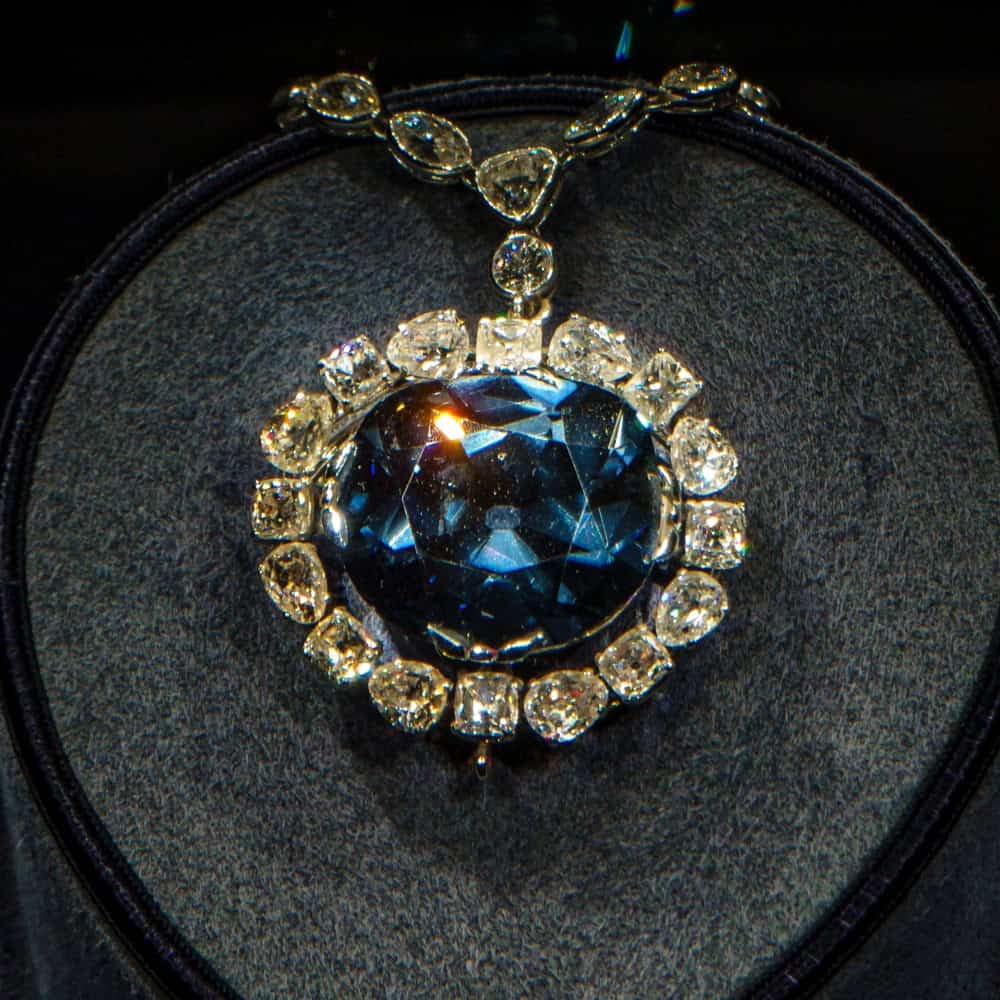
Estimated Value: $250 million. Weighing 45.52 carats, the Hope Diamond is renowned for its rare blue color and storied past. This diamond, believed to be cursed, originated from India and has passed through the hands of royalty and wealthy collectors over the centuries. Donated to the Smithsonian by Harry Winston in 1958, it is valued not only for its size and color but also for its captivating history. The Hope Diamond remains a highlight of the National Museum of Natural History’s collection.
The Mona Lisa – Louvre Museum, Paris
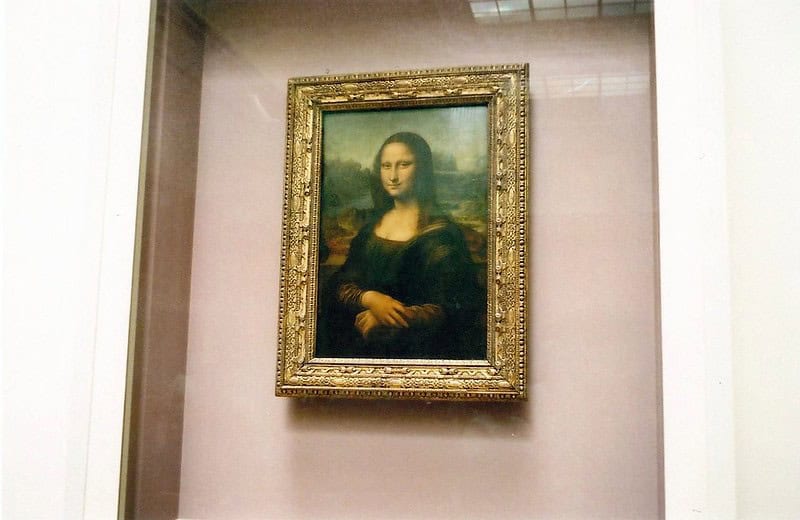
Estimated Value: $850 million. Leonardo da Vinci’s masterpiece, the Mona Lisa, is arguably the most famous painting in the world. This 16th-century portrait of Lisa Gherardini, also known as La Gioconda, captivates millions with her enigmatic smile and exquisite detail. Its value is incalculable due to its artistic significance, historical impact, and cultural symbolism. The Mona Lisa’s prominence ensures it is one of the most visited and valuable artifacts in any museum.
The Dead Sea Scrolls – Israel Museum, Jerusalem
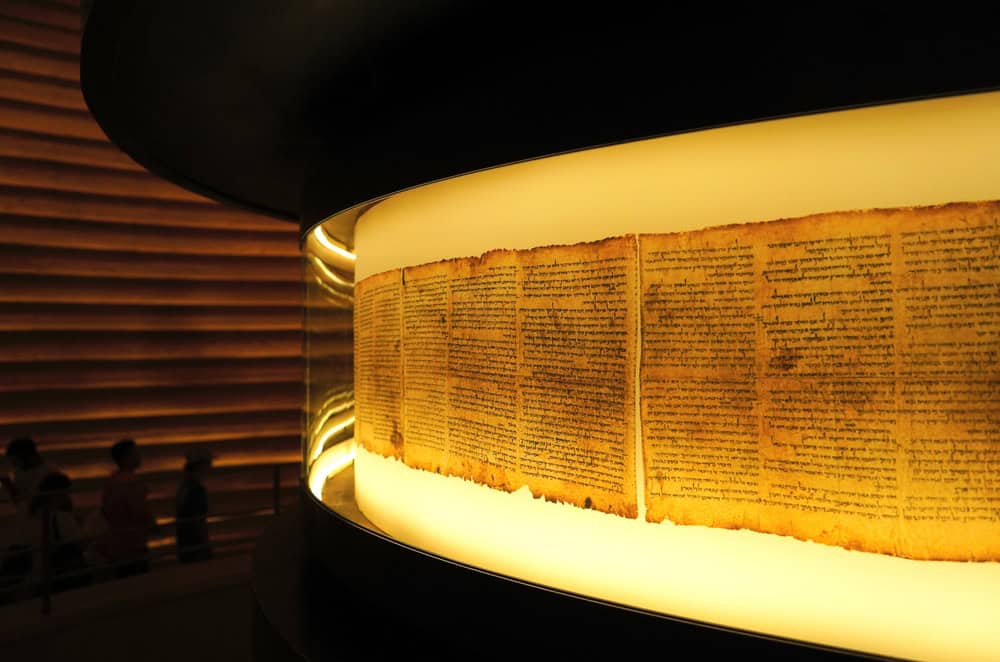
Estimated Value: Priceless (individual scrolls have sold for millions at auction). Discovered between 1947 and 1956, the Dead Sea Scrolls consist of over 900 manuscripts, including biblical texts dating back to the second century BC. These scrolls provide invaluable insights into the history and religion of the ancient Jewish community. Preserved in the Shrine of the Book at the Israel Museum, they are considered priceless due to their historical, religious, and cultural importance.
The Elgin Marbles – British Museum, London
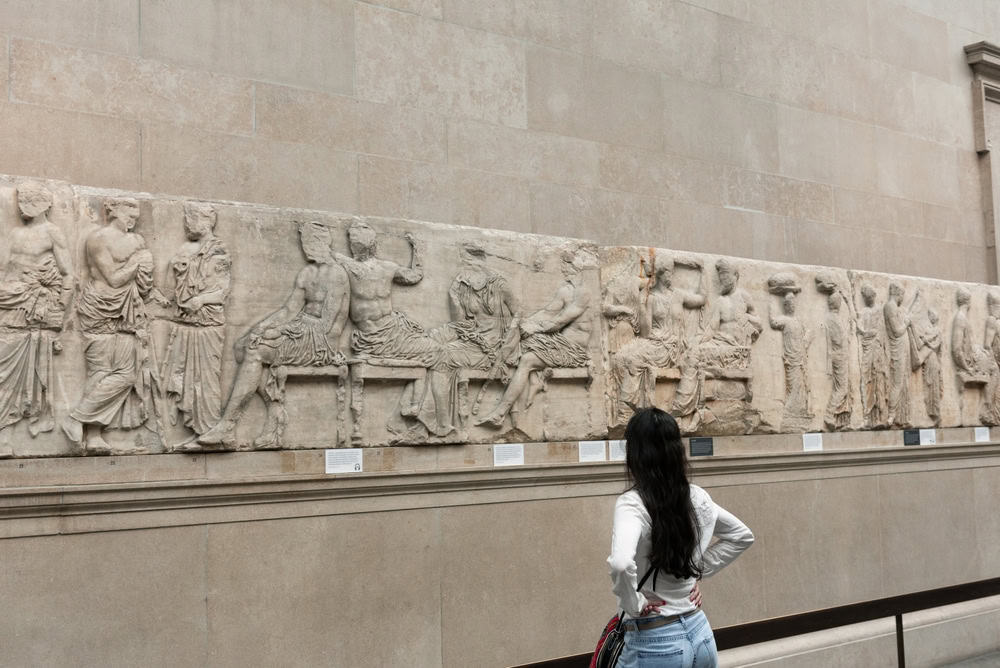
Estimated Value: Priceless (collective value in the billions). These classical Greek marble sculptures were part of the Parthenon and other buildings on the Acropolis of Athens. Acquired by Lord Elgin in the early 19th century and later sold to the British Museum, they include some of the finest examples of ancient Greek art. Their artistic and historical significance has made them a subject of intense debate and a priceless treasure of classical antiquity.
The Terracotta Army – Museum of the Terracotta Army, Xi’an
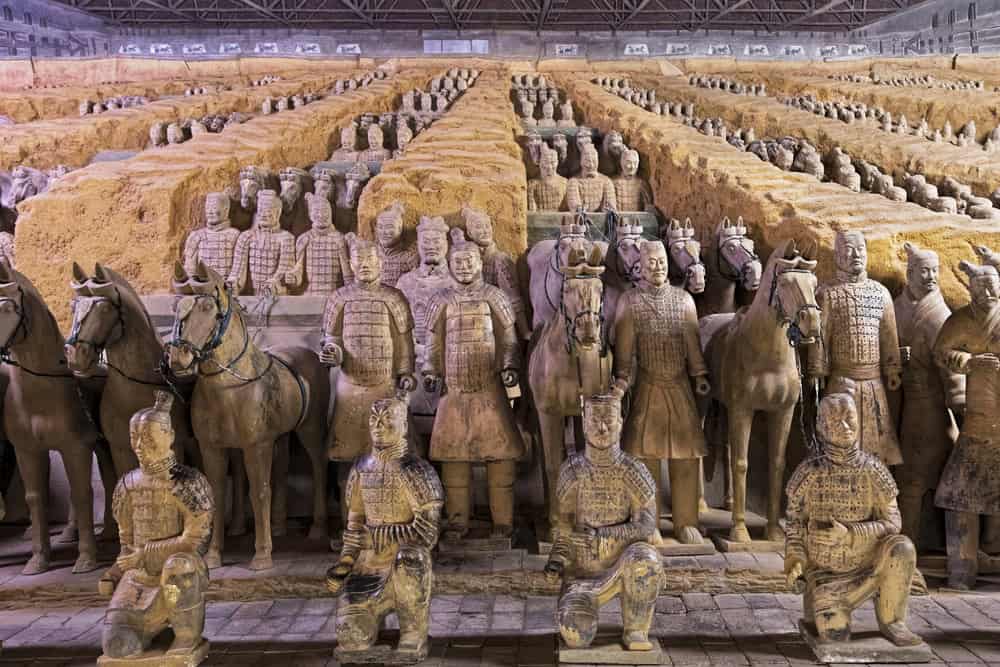
Estimated Value: Priceless (considered a national treasure of China). The Terracotta Army consists of thousands of life-sized clay soldiers buried with China’s first emperor, Qin Shi Huang, in the late third century BC. Discovered in 1974, these figures are remarkable for their individuality and detailed craftsmanship. The army represents one of the most significant archaeological finds of the 20th century and is invaluable for understanding ancient Chinese culture and history.
The Bust of Nefertiti – Neues Museum, Berlin
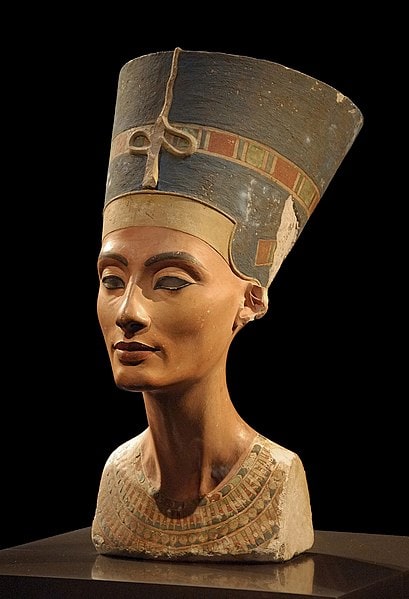
Estimated Value: Priceless (insured for over $400 million). This limestone bust of Queen Nefertiti, crafted around 1345 BC, is a masterpiece of ancient Egyptian art. Discovered in 1912 by a German archaeological team, it is renowned for its exquisite beauty and intricate detailing. The bust is a symbol of Egypt’s rich artistic heritage and has been the subject of international admiration and controversy. Its historical and cultural value makes it an irreplaceable artifact.
The Fabergé Eggs – Various Museums
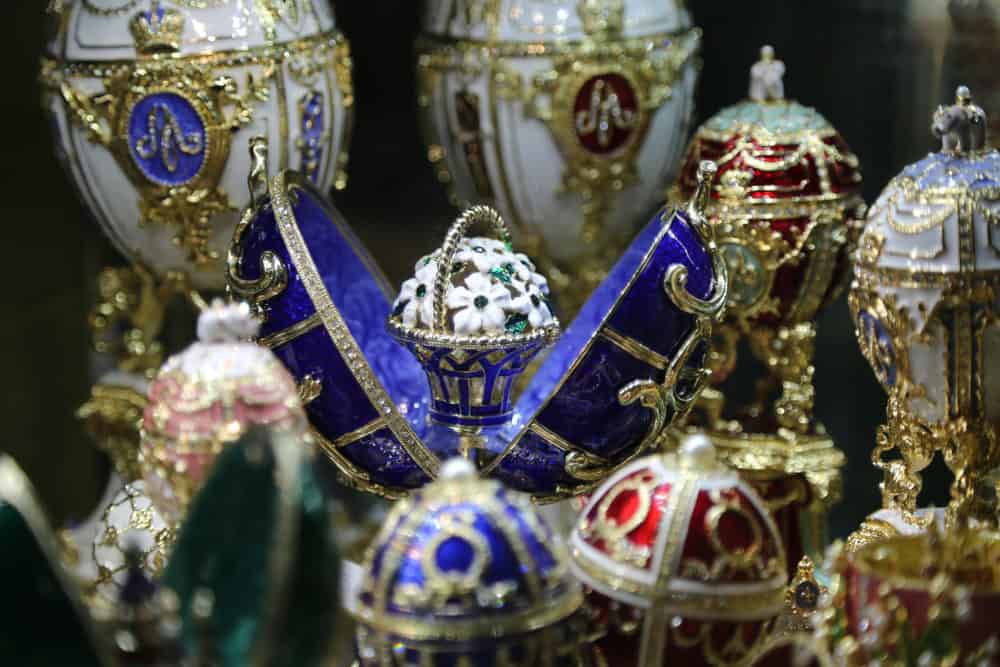
Estimated Value: $20 million to $50 million each. The Fabergé Eggs, created by Peter Carl Fabergé for the Russian imperial family, are exquisite examples of jeweled art. Each egg, intricately designed and crafted with precious metals and gemstones, contains a unique surprise inside. The most famous of these are housed in the Kremlin Armoury in Moscow and the Fabergé Museum in St. Petersburg. Their unparalleled craftsmanship and historical significance render them priceless.
The Codex Leicester – Private Collection
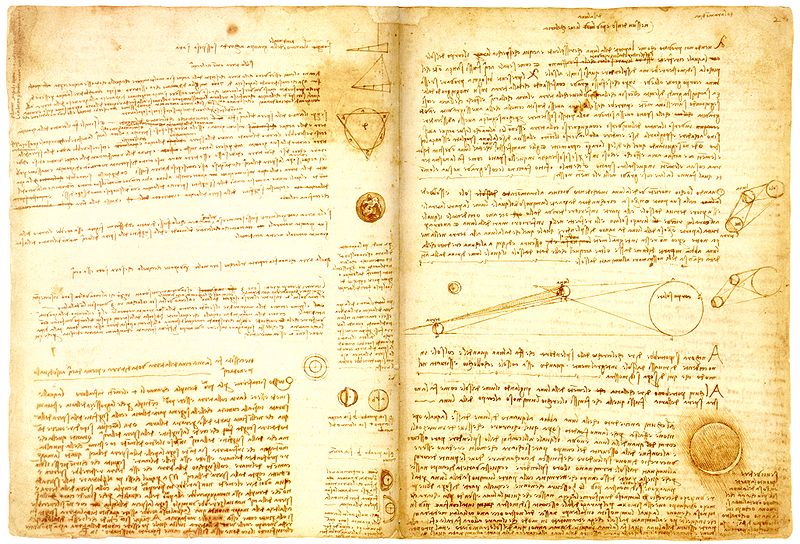
Estimated Value: $30.8 million (purchased by Bill Gates). The Codex Leicester is a 72-page scientific journal written by Leonardo da Vinci. It contains his observations and theories on various topics, including water movement, fossils, and astronomy. Purchased by Bill Gates in 1994 for $30.8 million, this manuscript is one of the most valuable books in the world. Its insights into da Vinci’s genius and contributions to science and art make it an invaluable artifact.
The Crown of Saint Wenceslas – Prague Castle, Czech Republic
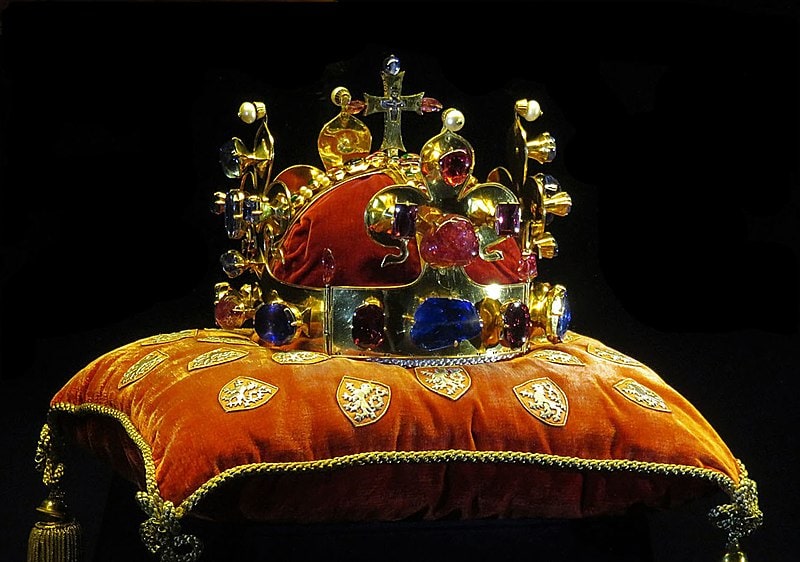
Estimated Value: Priceless (considered a national treasure). This crown, part of the Bohemian Crown Jewels, was made for Charles IV in 1347. Adorned with precious stones, including sapphires, emeralds, and pearls, it symbolizes the Czech monarchy’s history and power. Kept under strict security in the St. Vitus Cathedral, the crown’s historical and cultural significance, coupled with its opulence, makes it priceless.
The Antikythera Mechanism – National Archaeological Museum, Athens
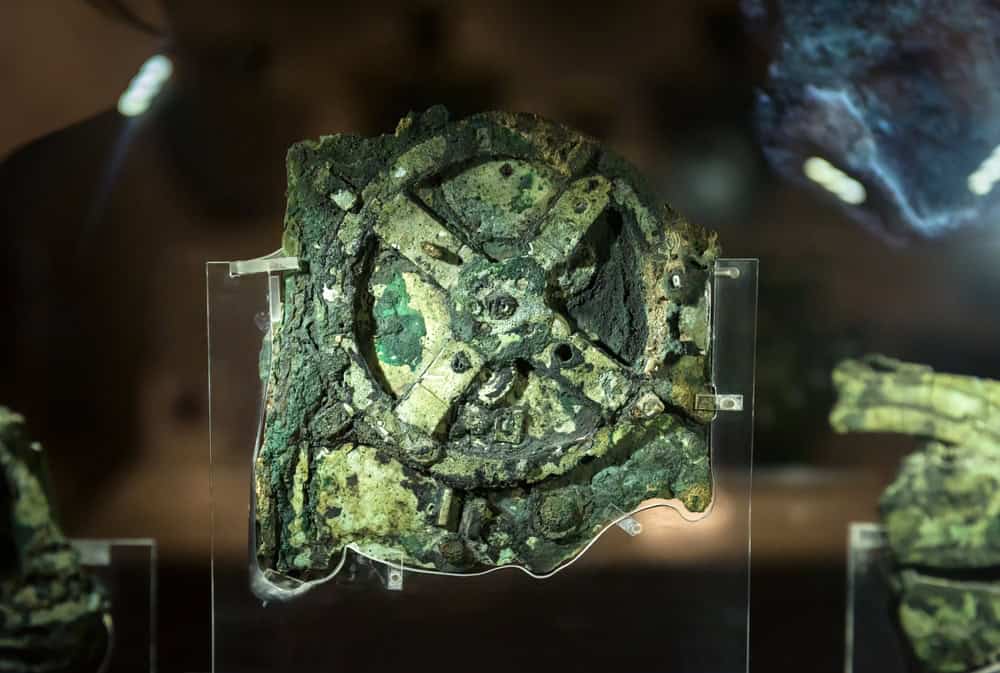
Estimated Value: Priceless (considered invaluable for its historical significance). Discovered in a shipwreck off the coast of Antikythera in 1901, this ancient Greek device dates back to the 1st century BC. Often considered the world’s first analog computer, it was used to predict astronomical positions and eclipses. The mechanism’s complexity and technological advancement highlight the ingenuity of ancient Greek engineering. Its uniqueness and historical value make it an extraordinary artifact.
The Cullinan Diamond – Various Locations
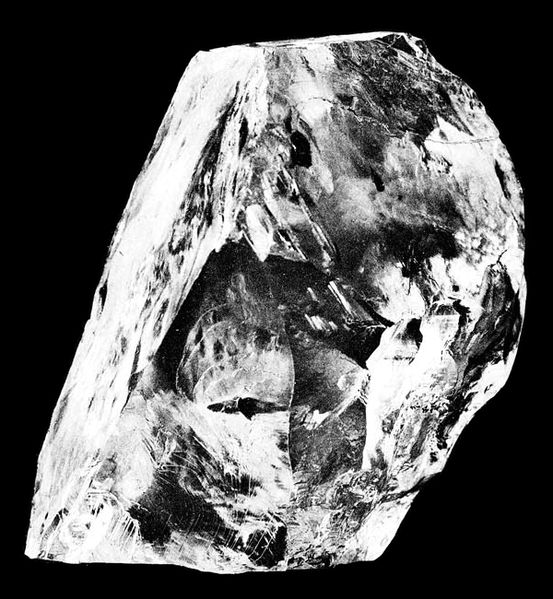
Estimated Value: $400 million (for the entire collection of cut stones). Discovered in South Africa in 1905, the Cullinan Diamond was the largest gem-quality rough diamond ever found, weighing 3,106 carats. It was cut into several major stones, including the Great Star of Africa and the Lesser Star of Africa, which are part of the British Crown Jewels. The Cullinan Diamond’s immense size and flawless quality make it one of the most valuable gemstones in history.
The Book of Kells – Trinity College Library, Dublin
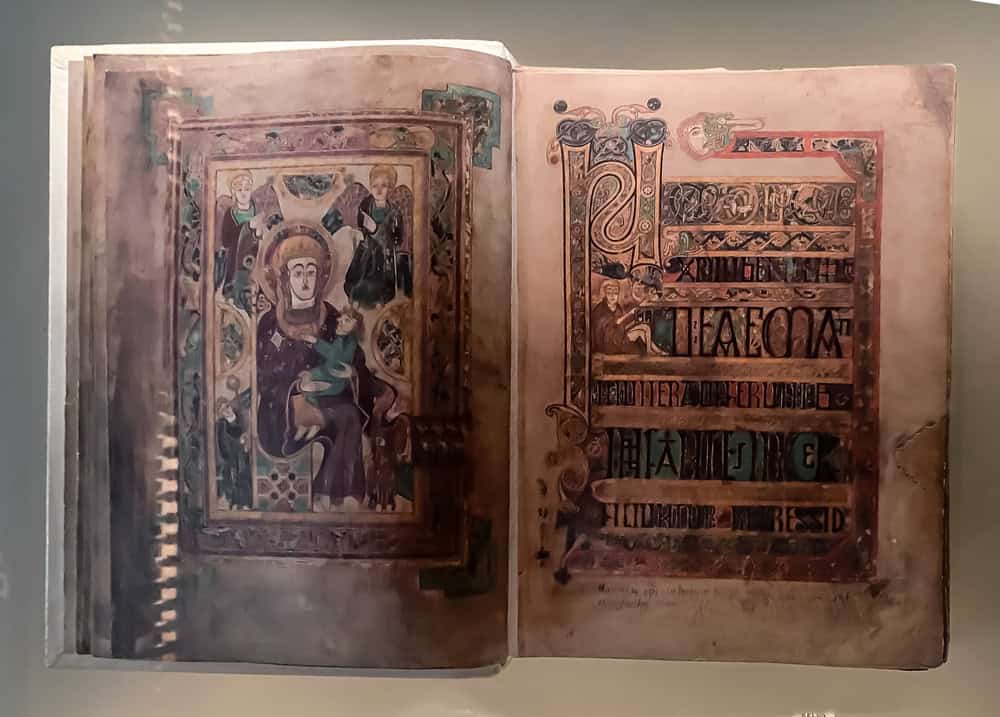
Estimated Value: Priceless (insured for over $100 million). This illuminated manuscript, created by Celtic monks around 800 AD, is one of the most magnificent examples of medieval art. It contains the four Gospels of the New Testament, richly decorated with intricate designs and vibrant colors. The Book of Kells is not only a religious treasure but also a masterpiece of artistic and cultural heritage, making it priceless.
The Wright Flyer – National Air and Space Museum, Washington D.C.
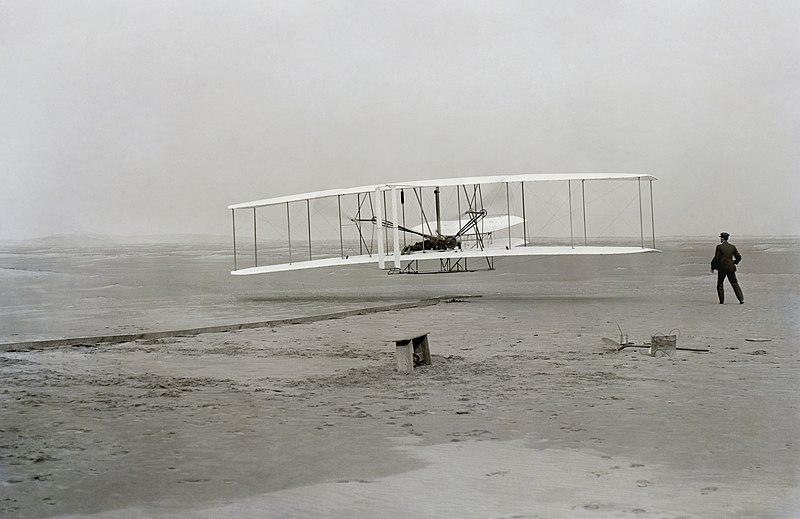
Estimated Value: Priceless (considered invaluable for its historical significance). The Wright Flyer, the first successful powered aircraft, was flown by the Wright brothers in 1903. This pioneering invention marked the beginning of modern aviation. Preserved at the Smithsonian Institution, the Wright Flyer is an invaluable artifact representing human ingenuity and the dawn of powered flight. Its historical significance and pioneering achievement make it priceless.
The Magna Carta – Various Locations
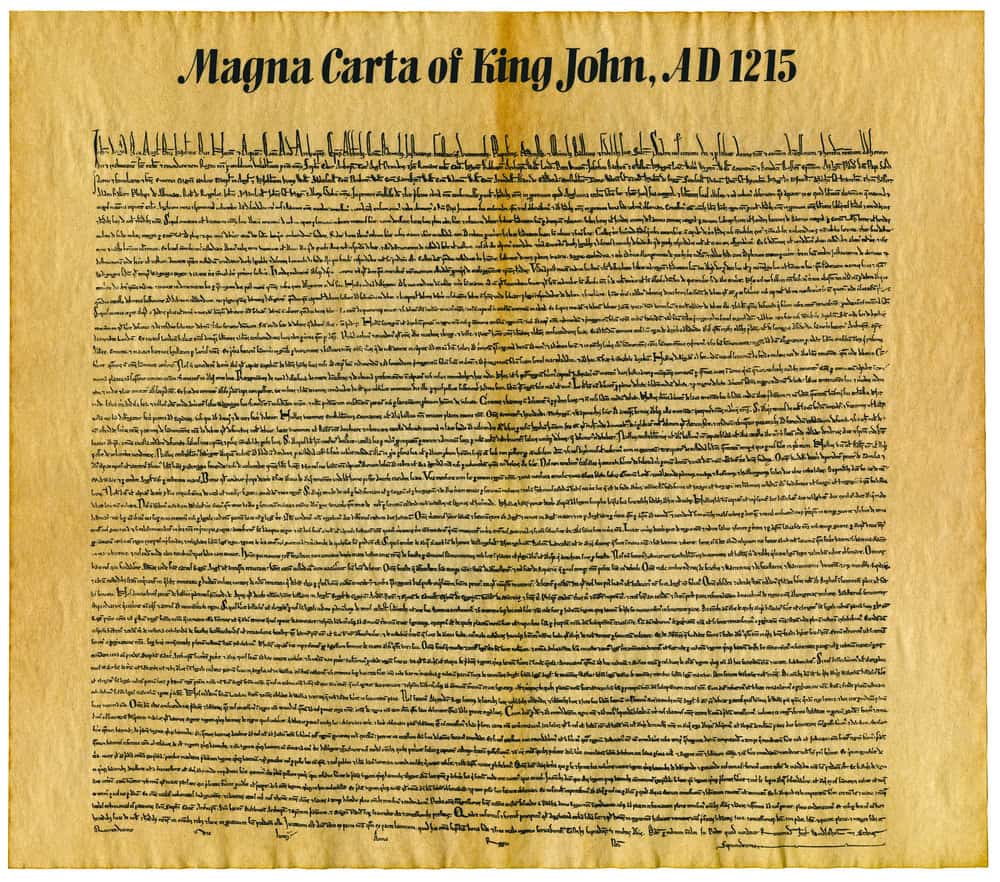
Estimated Value: Priceless (original copies valued in the tens of millions). Sealed by King John of England in 1215, the Magna Carta is a foundational document in the history of democracy and legal rights. It established the principle that everyone, including the king, was subject to the law. Original copies of the Magna Carta are preserved in several institutions, including the British Library and Salisbury Cathedral. Its impact on legal and political systems worldwide renders it an invaluable artifact.
The Sword of Goujian – Hubei Provincial Museum, Wuhan
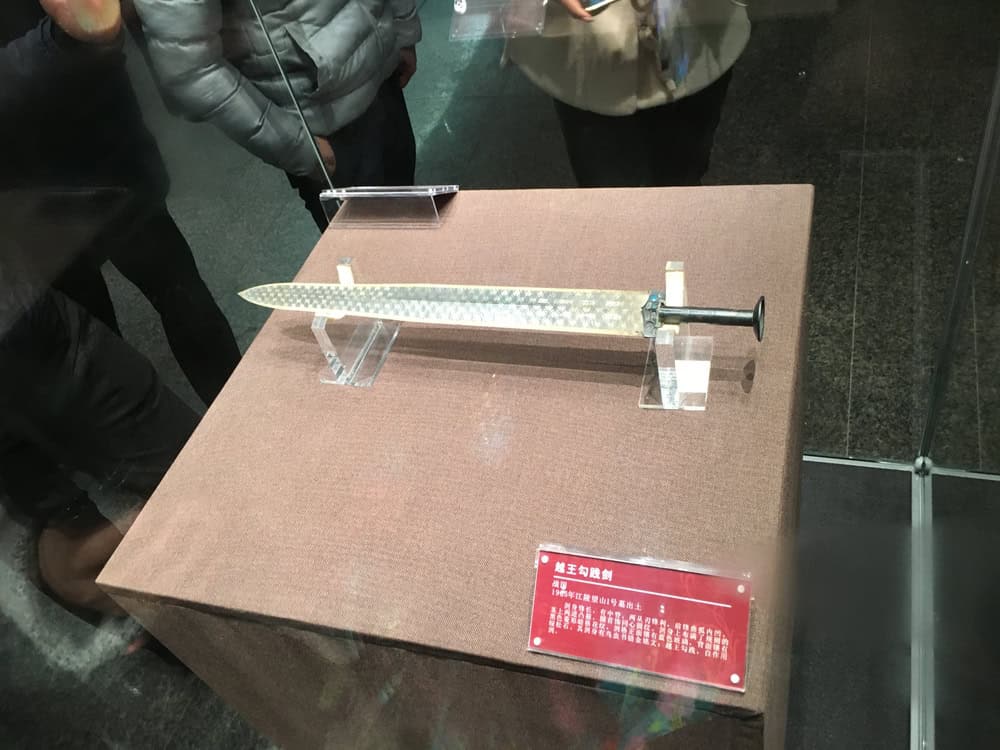
Estimated Value: Priceless (considered a national treasure of China). Dating back to the Spring and Autumn period (771-403 BC), this ancient Chinese sword was discovered in 1965. Remarkably well-preserved, it is known for its sharpness, intricate design, and inscriptions. The Sword of Goujian symbolizes the advanced metallurgical techniques and cultural heritage of ancient China. Its historical and artistic value make it a priceless treasure.
The Bayeux Tapestry – Bayeux Museum, France
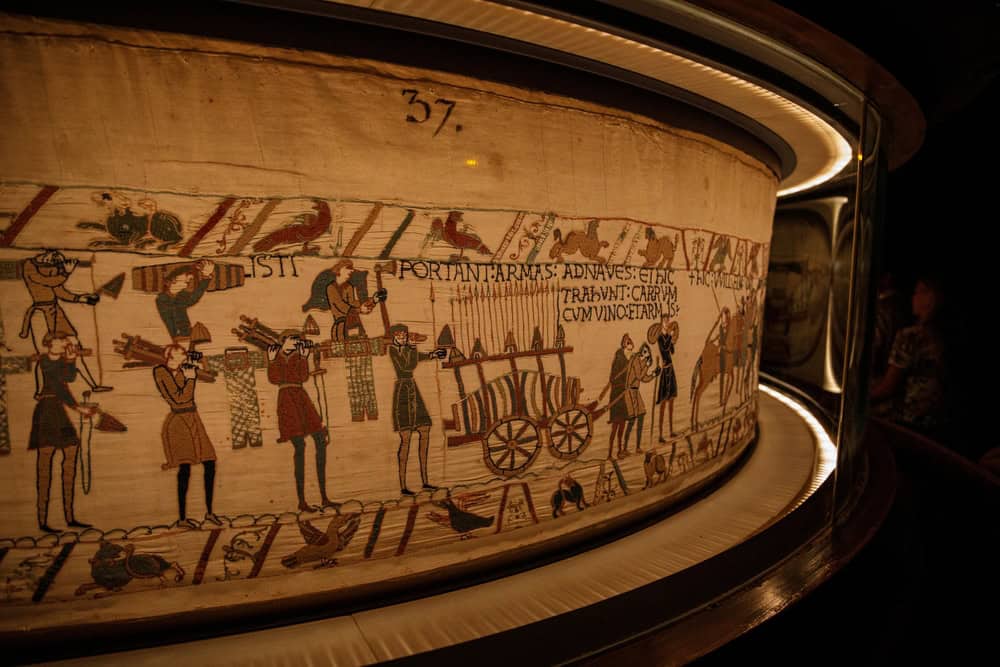
Estimated Value: Priceless (considered invaluable for its historical significance). This 11th-century embroidered cloth depicts the events leading up to the Norman conquest of England. Spanning nearly 70 meters in length, it provides a detailed and vivid narrative of medieval history. The Bayeux Tapestry is a unique artifact that offers invaluable insights into the art, culture, and history of the time. Its historical significance and intricate craftsmanship make it an irreplaceable masterpiece.
The Venus de Milo – Louvre Museum, Paris
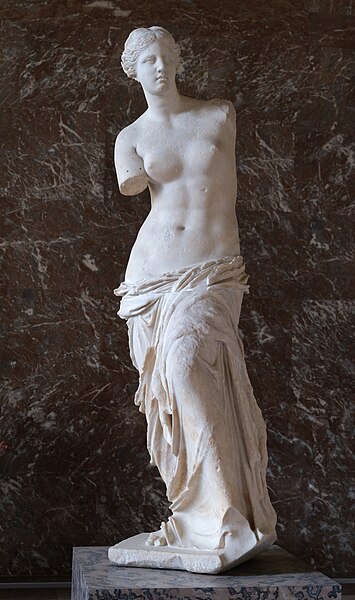
Estimated Value: Priceless (considered invaluable for its artistic and historical significance). This ancient Greek statue, believed to depict Aphrodite, was discovered on the island of Milos in 1820. Dating back to around 150 BC, it is renowned for its beauty and classical form. The Venus de Milo’s artistic excellence and historical significance have made it one of the most celebrated sculptures in the world. Its cultural impact and timeless beauty render it a priceless artifact.
This article originally appeared on Rarest.org.
More From Rarest.Org
The Mason jar was a welcome invention in the mid-nineteenth century, providing families the ability to preserve goods when refrigeration technology was not readily available. Read more.
Exploring the pinnacle of Jeep’s legendary lineup, the ’11 Most Expensive Jeep Wranglers Ever’ showcases a blend of luxury, performance, and iconic design. Read more.
While the intended purpose of toys is to breed imagination and fun for children, rare toys raise the stakes. Instead of tea parties and fictional battles, these unique objects become expensive memorabilia with exciting stories attached. Read more.

